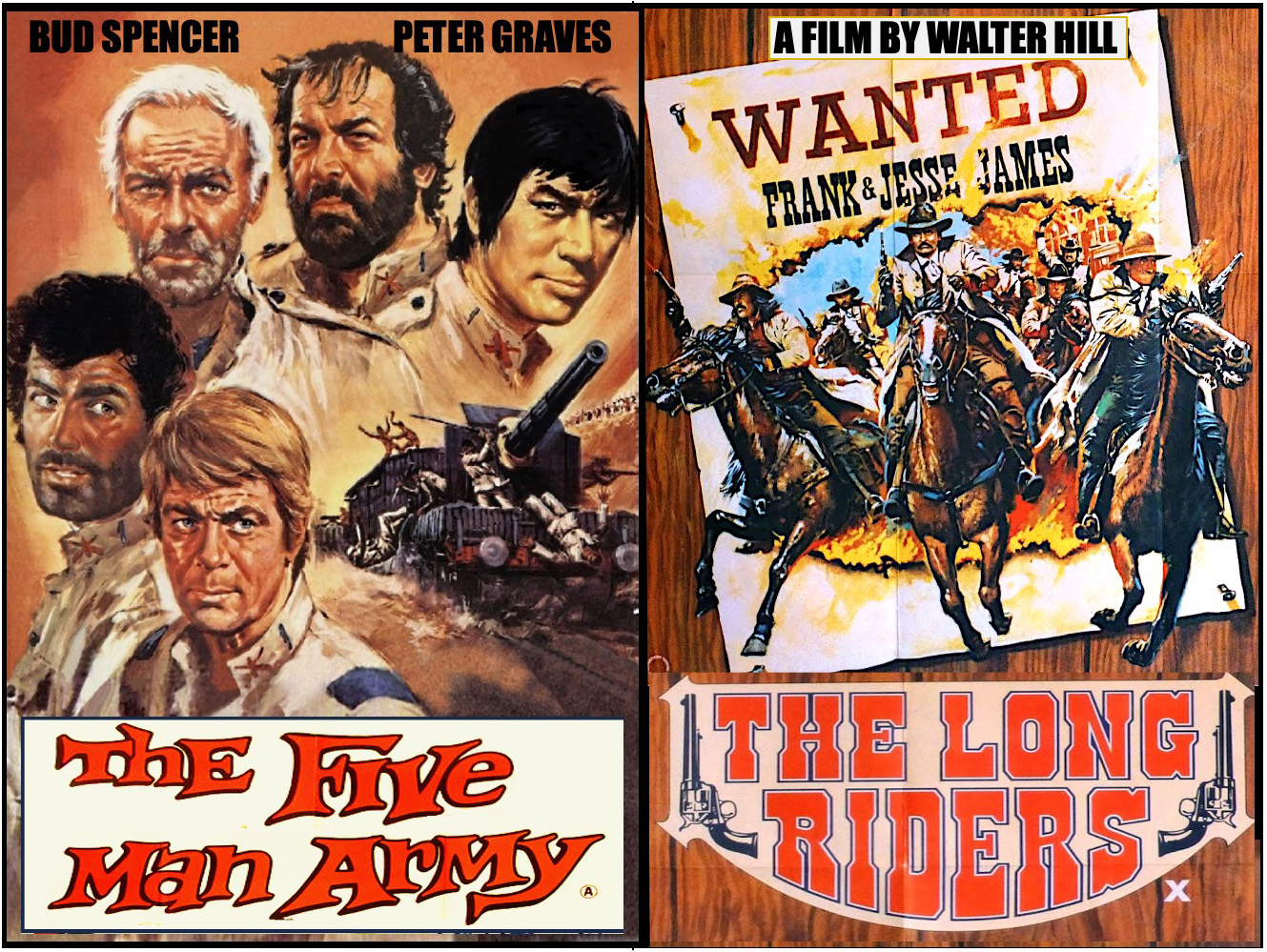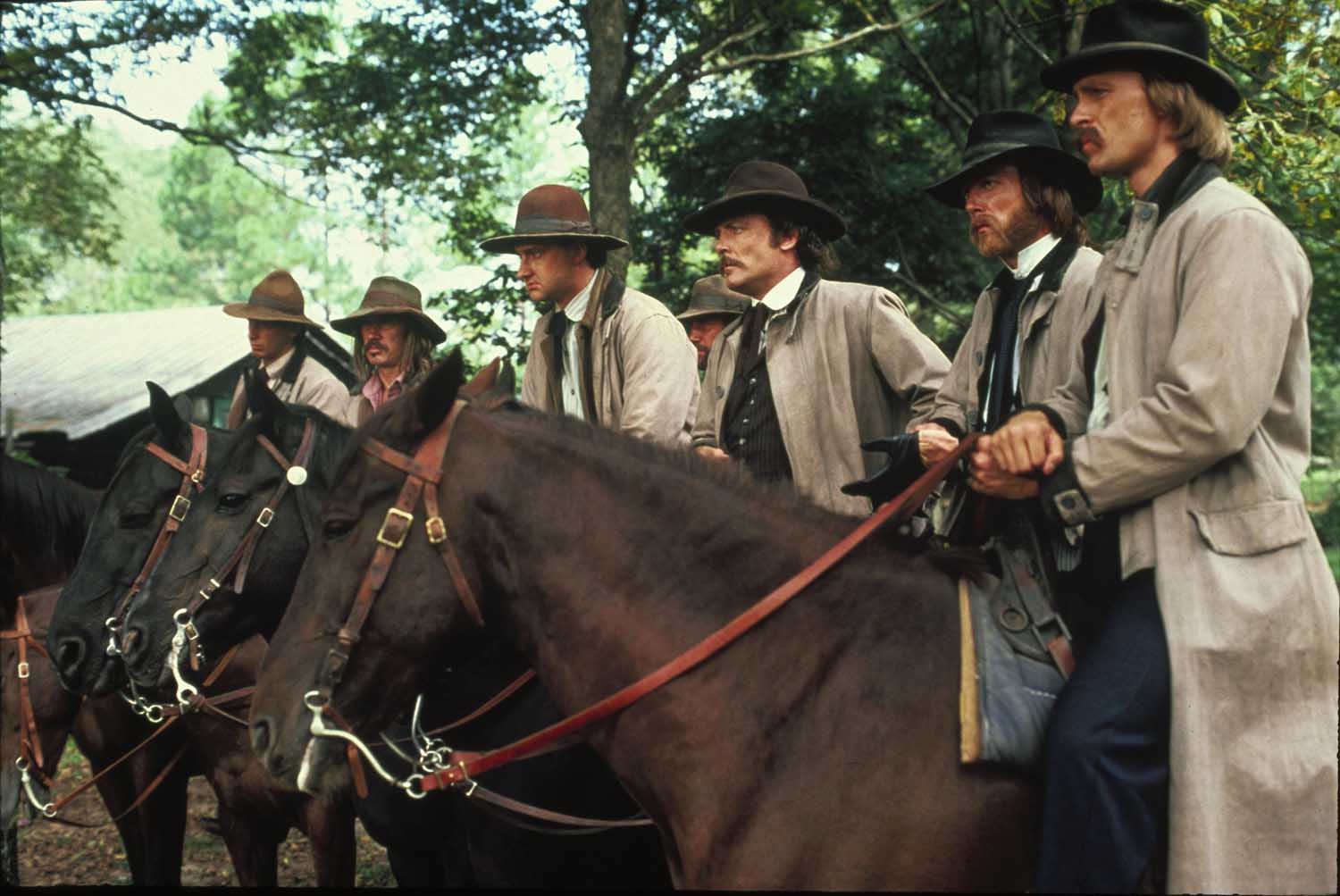

Ever since The Magnificent Seven (1960) rode across the screen, the ensemble western has been a staple of the cowboy genre. The appeal of the ‘men on a mission’ story has been exploited in heist capers, bank robbery thrillers, and even Mexican revolution scenarios. Lost Reels presents a 16mm double bill of two rarely screened films in this most enjoyable of western sub-genres. The first, The Five Man Army (1969) is a curious hybrid of late 1960s studio filmmaking and Italian spaghetti westerns and features Peter (Mission Impossible) Graves as “The Dutchman”, the leader of a group elite outlaws plotting to rob a cargo train. It’s lively, entertaining, and at its centre there’s a spellbinding Rififi-style train robbery sequence. The second, Walter Hill’s The Long Riders (1980) is a gritty realistic western recounting the story of the James-Younger Gang famous for its casting of four sets of real-life acting brothers - the Keach’s, Carradines, Quaid’s, and Guests, in the parts of their 1880s sibling counterparts - the James’s, Youngers, Millers, and Fords. Brutal, bloody, and brilliant, it’s director Hill’s purest tribute to the revisionist westerns of Sam Peckinpah.
The Five Man Army (1969), directed by Don Taylor. Colour. Cert PG. 105 minutes.
Curiously out of circulation in the UK The Five Man Army (1969) is an entertaining Zapata western-cum-heist caper concerning “The Dutchman” (Peter Graves) who recruits a personal army including “The Gambler” (James Daley), “The Animal” (Bud Spencer), “Samurai” (Testurô Tanba) and “The Acrobat” (Nino Castelnuovo) to rob a cargo train for a bounty of $500,000. It’s an odd mix of studio and spaghetti westerns shot in Spain with American talent and a largely Italian crew. Rumoured to have been co-directed by up to four helmsmen including credited director Don Taylor, producer Italo Zingarelli, Giulio Questi (of Django Kill! (1967)), and co-writer Dario Argento, it’s far more coherent than expected. There’s a lively story, a consistently light tone, family friendly action (Samurai’s sword killings are strangely bloodless), a tour-de-force train robbery sequence, and even a surprise twist at the end. It’s one of the few features where Bud Spencer can be heard using his own voice and there’s an outstanding score by Ennio Morricone. Finally, the sharp eyed will spot the farmhouse and railroad locations from Once Upon a Time in The West (1968) which were recycled for the film. Remember when going to the movies was this much fun?
16mm print courtesy of Lost Reels.
The Long Riders (1980), directed by Walter Hill. Colour. Cert 15. 100 minutes.
Reviews at the time of its release focused on the “stunt” casting of the four sets of real-life acting brothers - the Keach’s, Carradines, Quaid’s, and Guests in the parts of the James’s, Youngers, Millers, and Fords – at the expense of the film’s other notable qualities. Westerns were a rarity even back in 1980, but director Walter Hill doubles-down on the gritty authenticity, accurately portraying the lives of the outlaws as a series of uncertain bank robberies interspersed with romantic sojourns and stretches of tedium. Although this inevitably leads to an episodic film it’s one with wonderful set-pieces and fine performances, particularly from James and Stacey Keach, Keith and David Carradine, and Pamela Reed as Belle Starr. The film marked the first of many collaborations between musician Ry Cooder and director Hill, and Cooder’s laconic folksy score perfectly captures the sense of time and place. The bloody finale featuring the Northfield Minnesota bank raid is a slow-motion, gut-wrenching spectacle worthy of prime Sam Peckinpah.
16mm print courtesy of Lost Reels.

